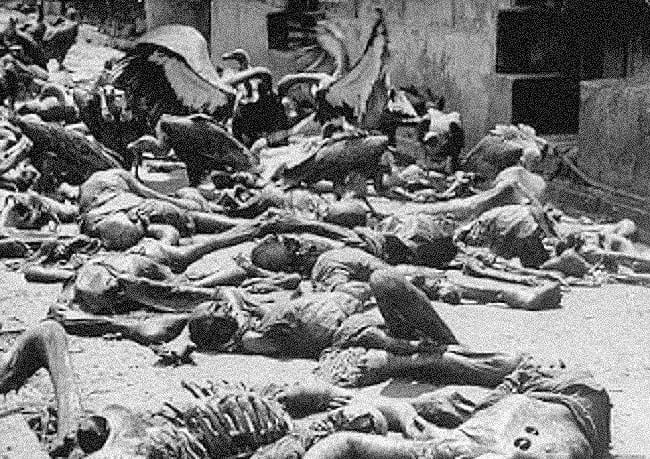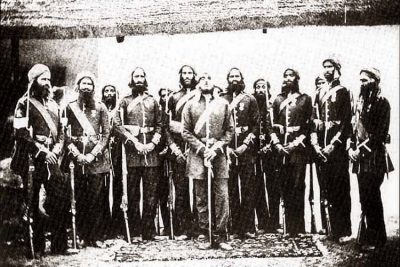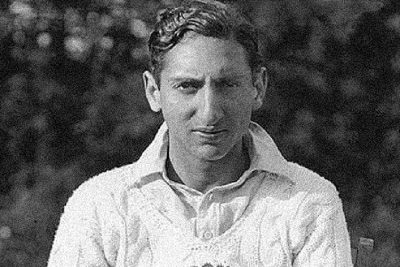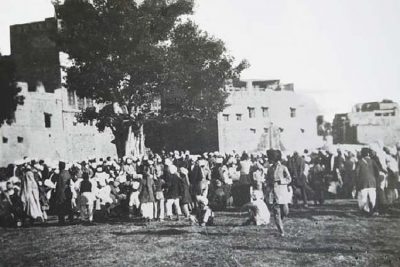The Bengal Famine of 1943: The Man-Made Famine That Killed Around 3 Million Indians
Share

Bengal famine,1943. (Unknown)
Between 1943 and 1944, while the Second World War was at its peak, a terrible famine ravaged Bengal and several other provinces in British India. The British government’s deliberate policies of ignoring the situation and not providing adequate relief measures exacerbated the situation. Over 3 million people died from starvation, disease, and other causes arising from this largely man-made famine.
The Bengal famine of 1943
A traditionally agrarian nation, India has faced famines throughout its long history. You will find mentions of these in many ancient folktales, epics, and other cultural instances. For the most part, these famines occurred due to natural events—lack of sufficient rainfall, a late Monsoon, pest infestation, and so on. Warfare and epidemics also often contributed to the famines.
Local rulers, however, usually managed to keep things from spiralling out of control. They had famine relief measures in place and these prevented mass starvations and deaths. Farmers could count on the rulers’ support in terms of decreased taxes and seed supplies from the state granaries.
To give an example, during the Mughal era, the Mughal emperors charged a 10-15% tax on the peasants. The grain they took from them was stored in the Mughal granary and, in times of difficulties, the government used this grain to sustain the population. So, if crops failed, the peasants always had a safety net they could depend on.
They lost this safety net after the British seized power from the Mughals. First of all, the British raised the taxation to 50%, and their main concern was with amassing a fortune for themselves. The condition of the peasants or the rest of the population didn’t trouble them too much. When the Bengal famine of 1769-1773 occurred, the government provided no relief at all and stood by as around 10 million people died. In fact, the British then proceeded to only increase the taxation to make up for the revenue lost due to the deaths of the farmers. So, in brief, the survivors were practically punished for surviving and had to work twice as hard to pay the taxes that their dead brethren would have paid.
In 1943, the situation wasn’t vastly different.
India was still a largely agrarian economy with the majority of the population living in rural areas. The province of Bengal, in particular, depended on agriculture, and large tracts of it was under rice cultivation. Rice was the principal crop of Bengal—as a government report on the famine later stated, it was a province of rice growers and rice eaters. The farmers grew three crops of rice per year and the winter crop was usually particularly bountiful.
In 1942, however, the winter crop failed, ravaged by a widespread outbreak of brown spot fungal disease. Plentiful rain that year, accompanied by cyclones and storms, contributed to the spread of the fungus. The crop failure was certainly a principal factor leading to the Bengal famine of 1943.
Additionally, the soil fertility was in decline and contributed to poor crop yields.

Vultures feeding on human remains during the famine. (Wallace / Wikimedia Commons)
Other factors contributing to the Bengal famine of 1943
Apart from natural reasons, let’s look at some of the other factors that led to the famine:
Socio-Economic factors
In 1943, Bengal was still a semi-feudal land, but the strictly drawn social boundaries were starting to unravel. The zamindars, who had traditionally been at the top, were losing their power, while the jotedars were gaining ascendency as landowners and usurers. The peasants, meanwhile, toiled on their meagre parcels of land and remained at the bottom of the social order. In fact, many of them saw their situation deteriorate further.
The grinding poverty forced them to take out monetary loans from the jotedars to meet even their basic daily needs. The jotedars charged them high interest rates for these loans, which essentially ensured that the peasants would never be able to repay the loans and would remain forever impoverished and in debt bondage. Many of them forfeited their lands and had to work as landless labourers on other people’s farms.
The peasant class was the worst hit and suffered the most during the Bengal famine of 1943.

A woman aiding a starving man. (Unknown)
The Second World War
The on-going war disrupted communication and transport. The British seized boats and barges that could have been used to transport food and burned them. This was done to prevent these vessels from being captured by the advancing Japanese. However, the policy prevented Indian farmers from transporting their harvest and led to monetary losses. It also prevented food from reaching the starving population.
Furthermore, wartime speculation and hoarding of rice stocks also contributed towards the famine.
The Japanese attack on Burma
In the normal course of things, the British government could have imported rice from neighbouring Burma for Bengal’s starving population. However, the Japanese advance and takeover of Burma prevented that.
The Quit India movement
The Indian National Congress, under Gandhi’s leadership, launched the Quit India Movement in 1942. While it was meant to be a non-violent mass resistance against the British, the arrest of the Congress leadership led to violent incidences throughout the country. Due to the efforts of the Indians to jeopardize the British war effort by sabotaging bridges, factories, trains, and so on, the British adopted a hardened and violent stance towards the population.
Governmental failure
As was the case in the 1700s, the British government followed a callous and unconcerned policy.
It would have been possible to alleviate the plight of the starving people and prevent millions from dying. The harvest in the rest of the country had been good and it would have been possible to send enough rice to Bengal to sustain its population. However, the British were more interested in supporting their war effort than in providing relief to the famine-struck province.

Malnourished orphans that survived the famine. (Bengal Speaks)
The food supplies that could have fed the starving Indian populace were diverted, instead, to feed the civilians in the UK and the British soldiers engaged in the war in other parts of the world.
In the British parliament, Prime Minister Winston Churchill ignored or turned down all official requests to import food to Bengal. He had no liking for Indians and, at one point, declared that it didn’t matter if they died since they seemed to breed like rabbits anyway. He inquired that if the famine was bad as everyone said, why was Gandhi still alive?
The British government also turned down offers from Canada and the USA to send food supplies to Bengal.
When the government did finally stir into action, the relief policies they implemented were inadequate and too late. The government then appointed a famine inquiry commission to investigate why the famine happened and make recommendations to prevent future famines.
The effects of the Bengal famine of 1943
Over three million people died in the famine. People lost their families, their homes, and their livelihoods. Diseases like typhoid, cholera, and malaria took a further toll of the population. Farmlands lay deserted and turned into wastelands. The tragedy rent the entire social fabric of Bengal, and the state took a long time to recover economically. As a result of the British government’s hard-hearted policies, the Indian freedom struggle gained further momentum.
Writer’s Opinion
Let us be clear about the causes of this famine. While natural factors certainly played a role, it was mainly a man-made famine. Except for the British government’s callous to the point of criminal conduct, it could have been possible to stave off the famine and save the millions that died. It is unfortunate that in modern-day India very few still remember this entirely avoidable tragedy.
Also, check out “The History of Breast Tax and the Revolt of Low Cast Women in 19th Century Travancore“.
Fact Analysis:
STSTW Media strives to deliver accurate information through careful research. However, things can go wrong. If you find the above article inaccurate or biased, please let us know at [email protected]













